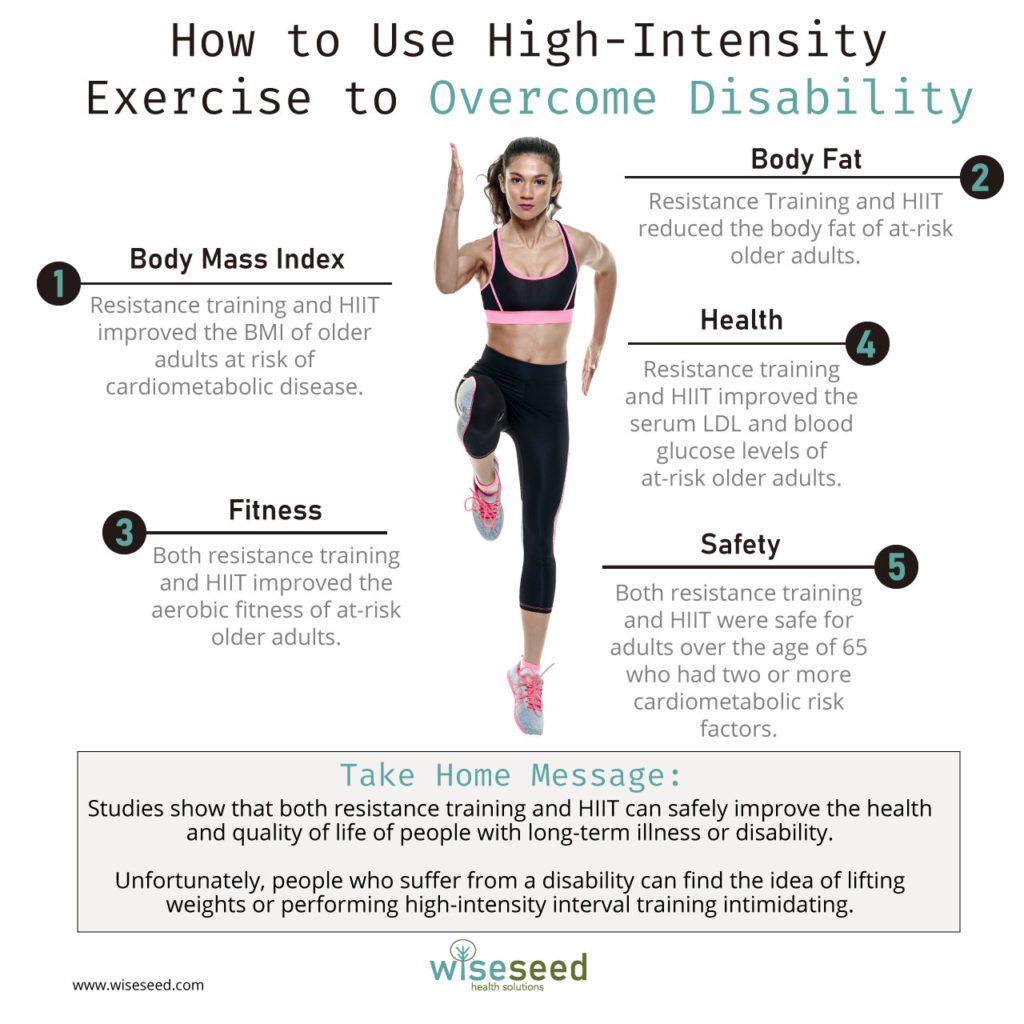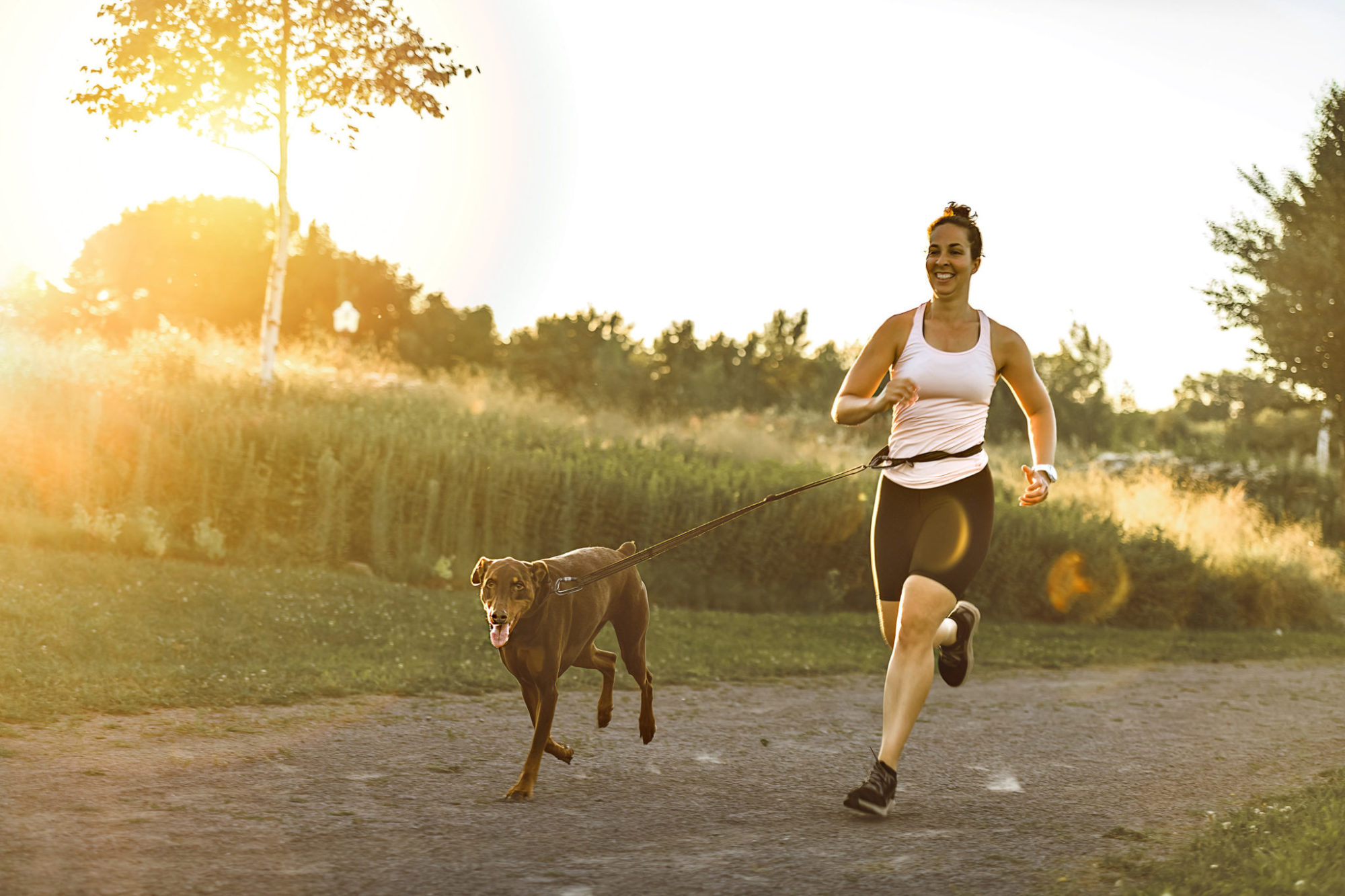How to use High-Intensity Exercise to Overcome Disability

‘You must expect great things of yourself before you can do them.’
Michael Jordan
I’ve begun researching different types of exercises that can be used by people with long-term illness or disability to get stronger, fitter, and healthier.
In part one of this series, I investigated the mind-body-movement disciplines of Tai chi and Pilates. These disciplines are indeed safe and effective options for people interested in starting regular exercise. However, I personally prefer more intense types of training, such as lifting weights and high intensity interval training (HIIT).
The question is, can these high-intensity training approaches also help people with disabilities or long-term illness and become anti-frail?
Cardiovascular Disease
Cardiovascular disease is the number one killer of older adults in Australia and North America. Old adults at high-risk of cardiovascular disease would benefit greatly from resistance training and HIIT. However, the key consideration is whether resistance training and HIIT are safe for this group of people.
The Interventions Tested
High-Intensity Interval Training (HIIT)
High-intensity interval training consists of bouts of vigorous physical activity executed at 80-100% peak heart rate or maximal aerobic activity followed by low-activity/rest intervals. For a more detailed discussion, please read our article on interval training. The health benefits of HIIT are many. For example, HIIT improves your aerobic fitness, increases the mitochondrial content of your muscles, reduces your blood pressure, as well as improving your blood lipid profile and insulin sensitivity.
Importantly, HIIT has been reported to be safe for older adults with cardiac and metabolic risk factors (1).
Resistance Training
I’ve discussed resistance training in detail in several articles. For now, suffice it to say that progressive resistance training improves your strength, endurance, and neuromuscular efficiency . Increasing your muscular strength reduces your chance of dying prematurely and reduces your risk of cardiometabolic disease by reducing your blood pressure and improving insulin sensitivity (2).
What the Author’s Did
Dr Parmenter and Colleagues examined whether resistance training, HIIT, or the combination of both can safely improve the health of old adults at risk of cardiovascular disease (3). To do this they focused on studies that only included adults with an average age of 65 years or more who also had two or more cardiometabolic risk factors (3).
The Authors combined the data from nine studies that were of good quality and matched the inclusion criteria. This included 422 participants with a mean age of around 68 years old (3). Seven studies measured the effects of resistance training, one study measured the effects of HIIT, and one study that assessed the combination of resistance training plus HIIT on cardio-metabolic disease risk factors (3).
What the Authors Found
Compared to control, resistance training and HIIT improved the body mass index of older adults, reduced their body fat, increased their aerobic capacity, and improved their serum low-density lipoprotein and blood glucose levels (3). Thus, both resistance training and HIIT were effective in improving multiple health indices of at-risk older adults.
Importantly, resistance training and HIIT were safe for older adults at risk of cardiovascular disease, with no serious adverse events or deaths resulting from these interventions (3). The only complications reported were drop-outs due to musculoskeletal complaints, fatigue, and minor health issues (3).
A Word of Caution
Many studies using resistance training and HIIT use a three-month preparatory phase for the participants to learn to exercise safely, and to allow their bodies to adapt to the new stress of regular exercise.
I also recommend three months of preparation before you commence any type of hard training. With respect to resistance training, I recommend that you devote three months to learning and mastering the basic lifts that will become the foundation of your strength program. For HIIT, I recommend three months of steady-state cardio to prepare your cardiovascular system for the more demanding HIIT.
Further, I believe that you should perform some of your steady-state training on the same equipment that you plan on using for your HIIT program. For example, if you intend to use a Concept 2 rowing machine for your HIIT, then you should perform steady-state cardio on the same machine to (i) dial in your technique and (ii) prepare your body for the specific demands of high-intensity rowing.
And finally, please check with your doctor before beginning any exercise regime. This is especially important if you are currently out of shape, have a long-term illness or disability, and are planning on starting a high-intensity exercise program.
Take Home Message
Many people who are older, out of shape or suffer from a disability may find the idea of lifting weights or performing high-intensity interval training intimidating and out of reach. This is a tragic situation, as both resistance training and HIIT can improve your health, longevity, and quality of life.
The evidence shows that resistance training and HIIT are both safe and effective for higher-risk populations, for example older adults at risk of cardiometabolic disease. Therefore, they may also be safe and effective for you. So why not check in with your doctor, and then give them a try?
Please click on the link below to download your free PDF.

References and Further Reading
1. A. L. Hannan et al., High-intensity interval training versus moderate-intensity continuous training within cardiac rehabilitation: a systematic review and meta-analysis. Open Access Journal of Sports Medicine 9, 1 (2018).
2. R. E. Ashton et al., Effects of short-term, medium-term and long-term resistance exercise training on cardiometabolic health outcomes in adults: systematic review with meta-analysis. British Journal of Sports Medicine 54, 341-348 (2020).
3. K. A. McLeod, M. D. Jones, J. M. Thom, B. J. Parmenter, Resistance training and HIIT improve cardiometabolic health in high risk older adults. International Journal of Sports Medicine.
Acknowledgements
Images provided by gorodenkoff and :OSTILL
Disclaimer
The material displayed on this website is provided without any guarantees, conditions or warranties as to its accuracy.
Information written and expressed on this website is for education purposes and interest only. It is not intended to replace advice from your medical or healthcare professional.
You are encouraged to make your own health care choices based on your own research and in conjunction with your qualified practitioner.
The information provided on this website is not intended to provide a diagnosis, treatment or cure for any diseases. You should seek medical attention before undertaking any diet, exercise, other health program or other procedure described on this website.
To the fullest extent permitted by law we hereby expressly exclude all warranties and other terms which might otherwise be implied by statute, common law or the law of equity and must not be liable for any damages whatsoever, including but without limitation to any direct, indirect, special, consequential, punitive or incidental damages, or damages for loss of use, profits, data or other intangibles, damage to goodwill or reputation, injury or death, or the cost of procurement of substitute goods and services, arising out of or related to the use, inability to use, performance or failures of this website or any linked sites and any materials or information posted on those sites, irrespective of whether such damages were foreseeable or arise in contract, tort, equity, restitution, by statute, at common law or otherwise.

Ten Minutes is All You Need
Research has shown that ten minutes of moderate-to-vigorous exercise performed each day is enough to significantly reduce your risk of early death.

Ten Minutes is All You Need
Research has shown that ten minutes of moderate-to-vigorous exercise performed each day is enough to significantly reduce your risk of early death.


